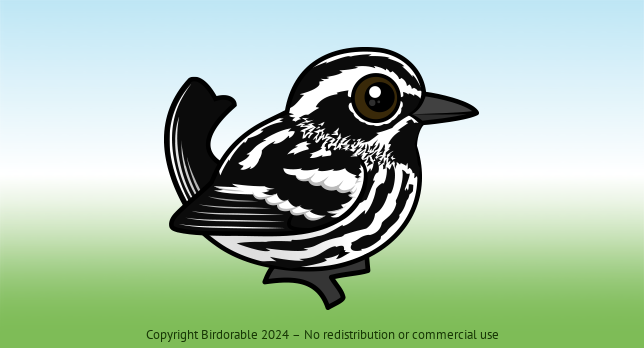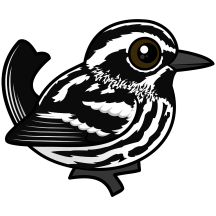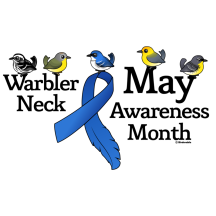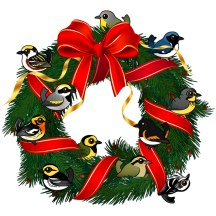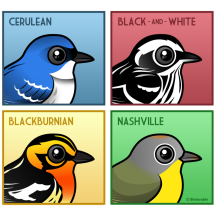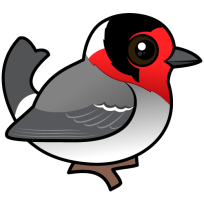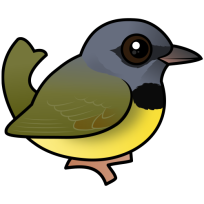The Black-and-white Warbler is a distinctive bird known for its zebra-like pattern. This small warbler sports bold black and white stripes across its body, making it one of the easiest warblers to identify. The males typically showcase more pronounced black markings than the females.
Uniquely among warblers, this species behaves more like a nuthatch, as it forages by creeping along tree trunks and branches, probing for insects in the bark. Its feeding behavior allows it to occupy a niche slightly different from other warblers, often hanging upside down as it moves along limbs.
Black-and-white Warblers are migratory, breeding in North America's deciduous and mixed forests across Canada and the eastern United States. They winter in Florida, Central America, and the West Indies. During migration, you can find them in a variety of forested habitats, making them a common sight across a wide range.
シロクロアメリカムシクイ (Shirokuroamerikamushikui)
벌레잡이딱새 (Beollejabittaksae)

